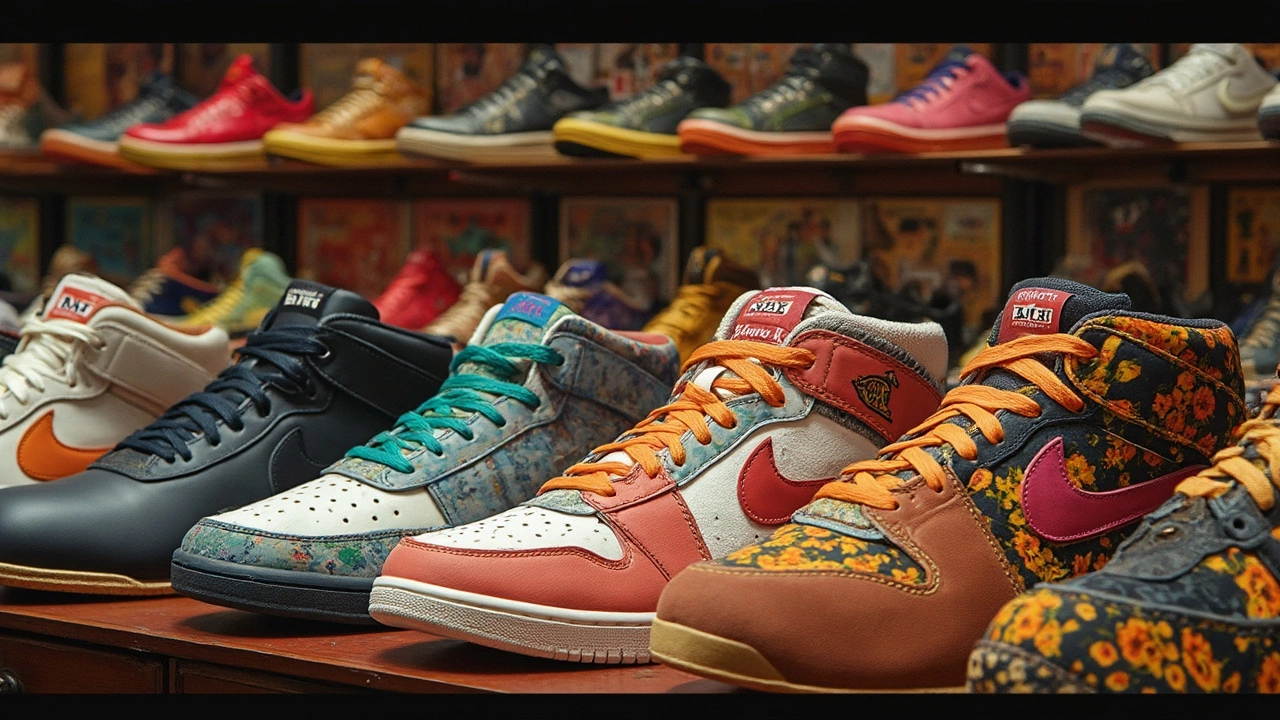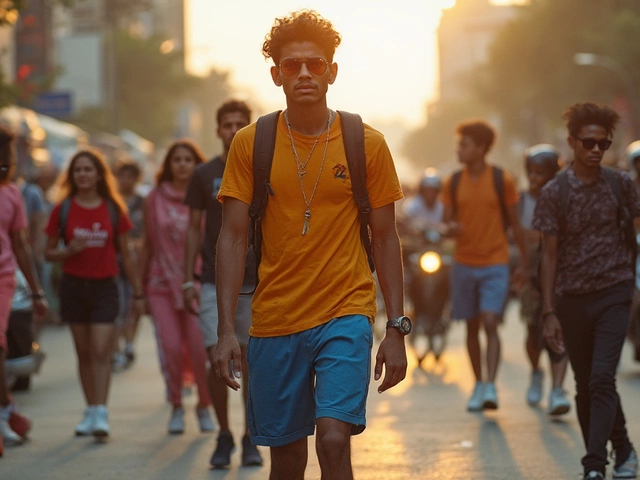Ever walked into a sneaker store and felt like you just entered a world where the line between sports and style is seriously blurred? Turns out, that confusion is legit—sneakers have a wild history of bouncing between sweaty gym floors and stylish city streets. These days, you see people rocking them everywhere: office meetings, morning jogs, music festivals, even weddings. But here’s the thing. Plenty of folks still wonder: are sneakers really sportswear, or has fashion claimed them for its own rules?
The Origin and Evolution of Sneakers
Picture this: It’s the late 1800s, and rubber-soled shoes called plimsolls are catching on, mostly for tennis and croquet. Jump ahead to 1917, and Converse launches the All Star—yes, the Chuck Taylors you probably recognize. These shoes were built for basketball players’ quick footwork, and back then, that was all they were meant for—sports, sports, and more sports.
Through the decades, big brands joined the race: Adidas, Nike, Puma, and Reebok. Track stars wore them to break world records. Basketball legends like Michael Jordan turned Air Jordans into a cultural weapon. By the '80s and '90s, rap artists and hip-hop fans picked up on that rebel swagger—think Run-D.M.C. rocking Adidas Superstars. It spread fast. Suddenly, kids weren’t just chasing points or medals; they were hunting for street cred.
Sneakers started getting designed for much more than sweaty courts. In the 2000s, collabs with designers and artists (think Yeezys, Off-Whites, and LV trainers) made sneakers fashion gold. By 2025, folks use the word ‘sneakers’ not just for running shoes, but for all sorts of everyday kicks that may never touch a gym floor.
Statistically, this sneaker craze is off-the-charts. Just check this out:
| Year | Global Sneaker Market (USD Billion) |
|---|---|
| 2016 | 55 |
| 2020 | 79 |
| 2024 | 98 |
Brands have learned to cash in, making limited edition drops, tying shoes to sports events, or launching streetwear collaborations. Quick tip: If you want a sneaker that’s ‘sportswear,’ don’t be fooled just by looks—check if it lists real athletic features like arch support, shock absorption, and breathable mesh.

What Defines Sportswear and Where Do Sneakers Fit?
Ask any sports coach or gym nerd, and they’ll tell you: real sportswear has one job—help you move better without falling apart after three runs or pick-up games. So where do sneakers land? Let’s break it down.
Sportswear usually includes clothes or gear designed to keep up with physical activity. Think sweat-wicking t-shirts, compression tights, or running shorts. Now, shoes that belong here need to resist sweat, handle rough movement, and offer real protection. The OG sneakers like Chuck Taylors and Nike Cortez were built with athlete feedback—tread for grip, foam for padding, and tough uppers that could handle game after game.
Fast-forward to now, and half the shoes in a ‘sneaker’ shop are made to just look cool. Sure, they might have a sporty silhouette, but that leather or thick suede isn’t really made for breaking a sweat. Classic examples? Adidas Stan Smiths, Vans Old Skool, and Air Force 1s. These guys have roots in sports, but ask any marathon runner—nobody is finishing 26.2 miles in them.
Let’s get super specific here. Running shoes are still true ‘sportswear.’ Same for basketball or tennis footwear—the pros care about grip, lightweight feel, and injury prevention. These shoes will highlight their tech: Flyknit uppers, Air cushioning, or motion-control soles. Lifestyle sneakers are riding the sports style wave but without the legit engineering: you’re not supposed to sprint or slam dunk in them. That’s not a flaw, it’s just a fact.
Here's a quick breakdown of what features to look for if you want a sneaker to count as genuine sportswear:
- Arch and ankle support for stability
- Cushioning for shock absorption
- Breathable mesh or moisture control
- Durable outsoles for grip and traction
- Lightweight, flexible build
If you notice, none of these scream ‘fashion-only.’ So, next time you see the word ‘sneaker,’ you’ve got to ask: is it made for sports or for that brunch photoshoot?
How Sneakers Became a Style Icon Beyond Sports
The real sneaker revolution kicked in when athletes started popping up at talk shows in their sporty kicks instead of shiny dress shoes. By the 1990s, fashion houses like Gucci and Balenciaga started noticing that people wanted to blend comfort and style. Suddenly, everyone from CEOs to pop stars wanted that laid-back, sporty vibe—even if they never tossed a ball in their lives.
Street style really took things up a gear. You’ll see entire outfits built around a killer pair of Jordans or classic New Balance 990s. These shoes are more than sportswear—they’re a statement. Want to look rich? Slip on some limited-edition Yeezys. Want to relive retro vibes? Grab some chunky FILA Disruptors.
And let’s not forget the sneaker resale game. Sites like StockX and GOAT make trading sneakers sound like trading stocks. Serious sneakerheads follow releases the way some people check weather forecasts. Limited drop? Expect lines around the block (or bots crashing webshops). Fun fact: Some Air Jordans have sold for more than $10,000 on the resale market. The most expensive ever? A pair worn by Michael Jordan himself, auctioned for $2.2 million in 2023. That’s not sportswear, that’s history on your feet.
Don't overlook the practical perks of this shift, though. I always remember taking Leo, my Labrador, out for walks and not worrying about muddy paths or puddles—because my daily go-to sneakers are built to look good and take a beating. And there’s the joy of not changing shoes between errands, gym, and pizza nights with friends.
Manufacturers have leaned into the lifestyle market hard. You'll spot more designs with chunky soles, wild colors, and collab details than ever. Although most people aren’t running marathons in these, they keep borrowing those classic athletic shapes—because we love how they make us feel: ready, energetic, and kind of sporty, even if we’re just ordering a coffee.
- If you’re into collecting, always check for authentic tags and avoid ‘too cheap to be true’ deals online.
- Keep sneakers clean by gently wiping them with a soft brush and water. For tough stains, a mix of baking soda and vinegar can do wonders.
- Store sneakers in a cool, dry place and stuff them with paper to hold their shape.
The verdict? Sneakers started as sportswear—no doubt about it. Over time, they conquered the streets, runways, and just about every casual occasion you can think of. But, if you want them to really function as athletic gear, double-check the materials and features. Otherwise, relax—owning a sweet pair of kicks is all about comfort and personal flair.

